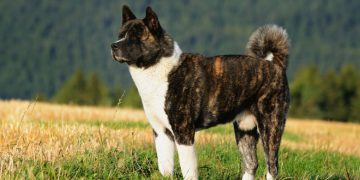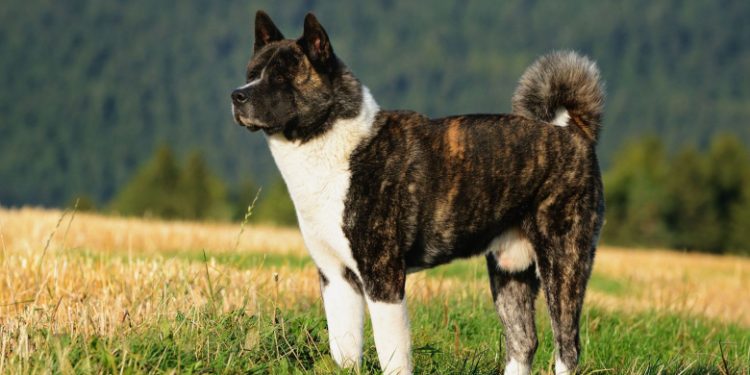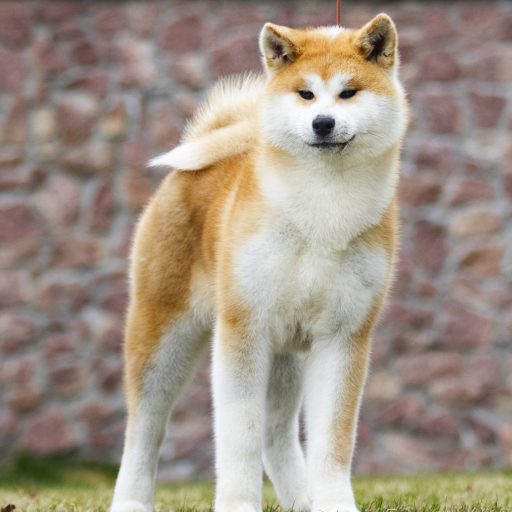The American Akita is a large, sturdy, solidly built, balanced, heavy-boned dog. The American Akita is a particularly large dog with a very particular character. Faithful and protective of its owner, it is also very reserved in its relationship with humans. However, very young, he has more of a playful character, open to others. It is therefore necessary to take advantage of this moment to educate and socialize it properly. He is not necessarily very athletic, he loves to bask. He shows loyalty to his master, whom he will defend at all costs. The Akita’s tolerance threshold is low, which implies increased caution, especially with children. It is essential to learn to read and respect the communication signals in dogs which are very subtle in the American Akita.
Breed History
The American Akita has the same origins as the Japanese Akita (Akita Inu). Their common ancestors lived in the Akita region, in the north of the island of Honshu in Japan. They were frequently used as fighting dogs and many of them were crossed with Mastiffs and Tosas to obtain bigger and more powerful dogs. This trend lasted until dog jousting was banned in 1908. Akitas nearly disappeared after World War II, when Japanese authorities requisitioned most dogs of all breeds in order to use their skin for making military outfits. The only breed spared by this measure was the German Shepherd, used in the Imperial Army.
To circumvent this regulation, breeders have therefore had the idea of crossing their Akitas with German Shepherds. Among these dogs, those of the Dewa line particularly appealed to the Americans, who imported several to the United States. It is from there that the separation was made between the Japanese Akita and the American Akita. The latter quickly enjoyed great popularity, so much so that the American Akita Club was created in 1956 and the American Kennel Club (AKC) recognized the breed in 1972. It will then be the turn of the Fédération Cynologique Internationale (FCI) to recognize it on May 30, 1999.
Physical peculiarities
His hair: straight, hard, slightly apart, short on the head, the bottom of the legs and the ears. The outer coat is associated with a shorter, thicker, softer and fuller undercoat.
Its color: all shades such as red, fawn or white. Variegated and brindle colors are also permitted. Single-colored white subjects do not show a mask. The color of the undercoat may be different from that of the outer coat.
Its head: in the shape of a blunt triangle, massive, well proportioned, without wrinkles when the dog is at rest. The skull is flat and broad, the stop is well marked, without being too abrupt. The nose is broad and black, the muzzle broad and high, the lips black and not pendulous.
Its ears: well erect, small in size, triangular in shape and with slightly rounded ends. Wide at their attachment which is not too low.
His eyes: relatively small, dark brown in color, almost triangular in shape.
Its body: writable in a rectangle (longer than high). The back is horizontal, the loins well muscled, the chest wide and well let down, the belly slightly raised.
Its tail: thick, covered with thick, rough and well-furnished hair, tied high, carried on the back or the side, rolling up three-quarters, in a full loop or in a double loop.
Feed
The American Akita’s diet must be balanced and healthy. Thus, protein intake should correspond to a quarter of its total diet, especially during periods of growth. We will favor good quality croquettes.












